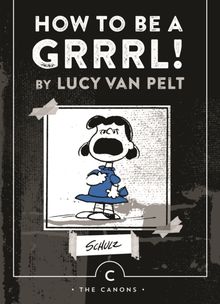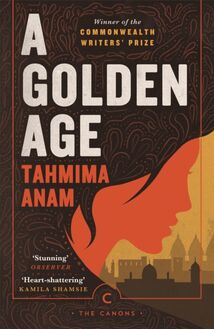Trout Fishing in America , livre ebook
89
pages
English
Ebooks
2014
Vous pourrez modifier la taille du texte de cet ouvrage
Obtenez un accès à la bibliothèque pour le consulter en ligne En savoir plus
Découvre YouScribe en t'inscrivant gratuitement
Découvre YouScribe en t'inscrivant gratuitement
89
pages
English
Ebooks
2014
Vous pourrez modifier la taille du texte de cet ouvrage
Obtenez un accès à la bibliothèque pour le consulter en ligne En savoir plus
Publié par
Date de parution
18 septembre 2014
Nombre de lectures
0
EAN13
9781782113812
Langue
English
Publié par
Date de parution
18 septembre 2014
Nombre de lectures
0
EAN13
9781782113812
Langue
English
Trout Fishing In America
Praise for Richard Brautigan:
‘An absolute original who found cause for celebration in the most unlikely places’ Guardian
‘Delicate, fantastic and very funny’ Malcolm Bradbury
‘A master of American black absurdism’ Financial Times
‘By opening yourself to [Brautigan’s books], you can get all the old fictional good things. Right there in your own imaginable home you can laugh, tingle, cry and admire’ New York Times Book Review
Also by Richard Brautigan
NOVELS AND NOVELLAS
A Confederate General from Big Sur (1964)
In Watermelon Sugar (1968)
The Abortion: An Historical Romance 1966 (1971)
The Hawkline Monster: A Gothic Western (1974)
Willard and His Bowling Trophies: A Perverse Mystery (1975)
Sombrero Fallout (1976)
Dreaming of Babylon: A Private Eye Novel 1942 (1977)
The Tokyo-Montana Express (1980)
So the Wind Won’t Blow It All Away (1982)
An Unfortunate Woman: A Journey (1982, but first published in 1994)
POETRY
The Return of the Rivers (1958)
The Galilee Hitch-Hiker (1958)
Lay the Marble Tea (1959)
The Octopus Frontier (1960)
All Watched Over by Machines of Loving Grace (1963)
Please Plant This Book (1968)
The Pill Versus the Springhill Mine Disaster (1969)
Rommel Drives on Deep into Egypt (1970)
Loading Mercury with a Pitchfork (1971)
June 30, June 30 (1978)
SHORT STORIES
Revenge of the Lawn (1971)
Trout Fishing in America
Richard Brautigan
Introduced by Neil Gaiman
Afterword by Billy Collins
Published in Great Britain in 2014 by
Canongate Books Ltd, 14 High Street, Edinburgh EH1 1TE
www.canongate.tv
This digital edition first published in 2014 by Canongate Books
This book was first published in the United States of America by Four Seasons Foundations in its Writing series edited by Donald Allen
First published in Great Britain by Jonathan Cape Ltd, 1970
Copyright © Richard Brautigan, 1967
Introduction © Neil Gaiman, 2014
Introduction from TROUT FISHING IN AMERICA by Billy Collins (reproduced as Afterword in this edition). Copyright © 2010 by Billy Collins. Reprinted by permission of Houghton Mifflin Harcourt Publishing Company.
All rights reserved.
The moral right of the author has been asserted
British Library Cataloguing-in-Publication Data
A catalogue record for this book is available on request from the British Library
ePub ISBN 978 1 78211 380 5
AN INTRODUCTION TO TROUT FISHING IN AMERICA BY NEIL GAIMAN
I.
The Introduction to Trout Fishing In America was, when young, introduced to Richard Brautigan through a book called The Hawkline Monster , which it bought because the word Monster was in the title. By the time it had read the book and realised it was not actually the Gothic Romance it had been led to believe by the title and the cover, it was already too late. Also, the back of the book contained advertisements for other books by Mr Brautigan, including In Watermelon Sugar and Trout Fishing In America . The Introduction to Trout Fishing In America, which at that time did not know what it was an introduction to, did not want to read Trout Fishing In America , because it believed erroneously, based on the title, that it might be a book about trout fishing in America.
The Introduction was big on monsters in those days. Not so big on Trout Fishing. It firmly believed that America was a fictional place, where the superheroes lived.
II.
When young, the Introduction to Trout Fishing In America went fishing twice. The first time it was taken by its grandfather, Harry Goldman, to fish from the seashore, before dawn, in Southsea. It was cold on the beach. No fish were caught, although mealworms were impaled upon hooks and flung into the ocean. This can be found in a graphic novel by the Introduction, with illustrations by Dave McKean. The fishing rods (fishing poles, as the Americans call them, which always confuses the Introduction, which believes that these should be some kind of spear) were brown, and kept in brown sacking in the garage. Who knows what happened to them, or where they went when the garage was no more?
The second time it was given a grey plastic fishing rod, and went to the little pond across the road, in the garden of the empty house. It fished for several hours, and caught nothing, but there was a dead fish, all silver, floating on the surface of the pond, which meant that there must be fish in there, just waiting.
Much later, that pond and the dead fish would appear in a novel written by the Introduction. Nobody knew that the Introduction was using its second fishing trip in the novel.
III.
The Introduction to Trout Fishing In America is puzzled that Trout Fishing In America is considered an obscure book, and that Richard Brautigan is sometimes considered an obscure author. It firmly believes that it should be impossible to describe the 1960s in literature without talking about both Brautigan and Trout Fishing In America . Obviously this is the kind of thing that Introductions believe about the books they introduce. The Introduction to Trout Fishing In America has no opinions about the matter. Perhaps it believes that no book that is truly loved can ever be obscure. Perhaps it knows that fashion, in literature and clothes and places to fish, will come around again, like a trout rising to feast on the evening gnat-clouds and sinking back into the dark waters.
IV.
Imagine an empty stage. Or an empty trout pool. Or a person who has figured out how to make a book in a way that nobody has made a book before. Part surrealist manifesto, part realist tract, partly an elusive joy that’s hard to explain to others, which is why you hand it to them and say ‘Read this’ and why you are so happy it is back in print once more. You hope that this may be the beginning of a Brautigan revival, but mostly you just want people to read it and be happy. Or be puzzled. Or be alive.
Signed in mayonnaise,
The Introduction to Trout Fishing In America
Trout Fishing In America says nothing in response.
It waits for you to begin the book.
CONTENTS
The Cover for Trout Fishing in America
Knock on Wood (Part One)
Knock on Wood (Part Two)
Red Lip
The Kool-Aid Wino
Another Method of Making Walnut Catsup
Prologue to Grider Creek
Grider Creek
The Ballet for Trout Fishing in America
A Walden Pond for Winos
Tom Martin Creek
Trout Fishing on the Bevel
Sea, Sea Rider
The Last Year the Trout Came up Hayman Creek
Trout Death by Port Wine
The Autopsy of Trout Fishing in America
The Message
Trout Fishing in America Terrorists
Trout Fishing in America with the FBI
Worsewick
The Shipping of Trout Fishing in America Shorty to Nelson Algren
The Mayor of the Twentieth Century
On Paradise
The Cabinet of Dr. Caligari
The Salt Creek Coyotes
The Hunchback Trout
The Teddy Roosevelt Chingader’
Footnote Chapter to “The Shipping of Trout Fishing in America Shorty to Nelson Algren”
The Pudding Master of Stanley Basin
Room 208, Hotel Trout Fishing in America
The Surgeon
A Note on the Camping Craze that is Currently Sweeping America
A Return to the Cover of This Book
The Lake Josephus Days
Trout Fishing on the Street of Eternity
The Towel
Sandbox Minus John Dillinger Equals What?
The Last Time I Saw Trout Fishing in America
In the California Bush
The Last Mention of Trout Fishing in America Shorty
Witness for Trout Fishing in America Peace
Footnote Chapter to “Red Lip”
The Cleveland Wrecking Yard
A Half-Sunday Homage to a Whole Leonardo da Vinci
Trout Fishing in America Nib
Prelude to the Mayonnaise Chapter
The Mayonnaise Chapter
Afterword
There are seductions that should be
in the Smithsonian Institute,
right next to The Spirit of St. Louis.
Trout Fishing in America
THE COVER FOR TROUT FISHING IN AMERICA
The cover for Trout Fishing in America is a photograph taken late in the afternoon, a photograph of the Benjamin Franklin statue in San Francisco’s Washington Square.
Born 1706—Died 1790, Benjamin Franklin stands on a pedestal that looks like a house containing stone furniture. He holds some papers in one hand and his hat in the other.
Then the statue speaks, saying in marble:
PRESENTED BY
H.D. COGSWELL
TO OUR
BOYS AND GIRLS
WHO WILL SOON
TAKE OUR PLACES
AND PASS ON.
Around the base of the statue are four words facing the directions of this world, to the east WELCOME, to the west WELCOME, to the north WELCOME, to the south WELCOME. Just behind the statue are three poplar trees, almost leafless except for the top branches. The statue stands in front of the middle tree. All around the grass is wet from the rains of early February.
In the background is a tall cypress tree, almost dark like a room. Adlai Stevenson spoke under the tree in 1956, before a crowd of 40, 000 people.
There is a tall church across the street from the statue with crosses, steeples, bells and a vast door that looks like a huge mousehole, perhaps from a Tom and Jerry cartoon, and written above the door is “Per L’Universo.”
Around five o’clock in the afternoon of my cover for Trout Fishing in America , people gather in the park across the street from the church and they are hungry.
It’s sandwich time for the poor.
But they cannot cross the street until the signal is given. Then they all run across the street to the church and get their sandwiches that are wrapped in newspaper. They go back to the park and unwrap the newspaper and see what their sandwiches are all about.
A friend of mine unwrapped his sandwich one afternoon and looked inside to find just a leaf of spinach. That was all.
Was it Kafka who learned about America by reading the autobiography of Benjamin Franklin …
Kafka who said, “I like the Americans because they are healthy and optimistic.”
KNOCK ON WOOD (PART ONE)
As a child when did I first hear about trout fishing in America? From whom? I guess it was a stepfather of mine.
Summer of 1942.
The old drunk told me about trout fishing. W














